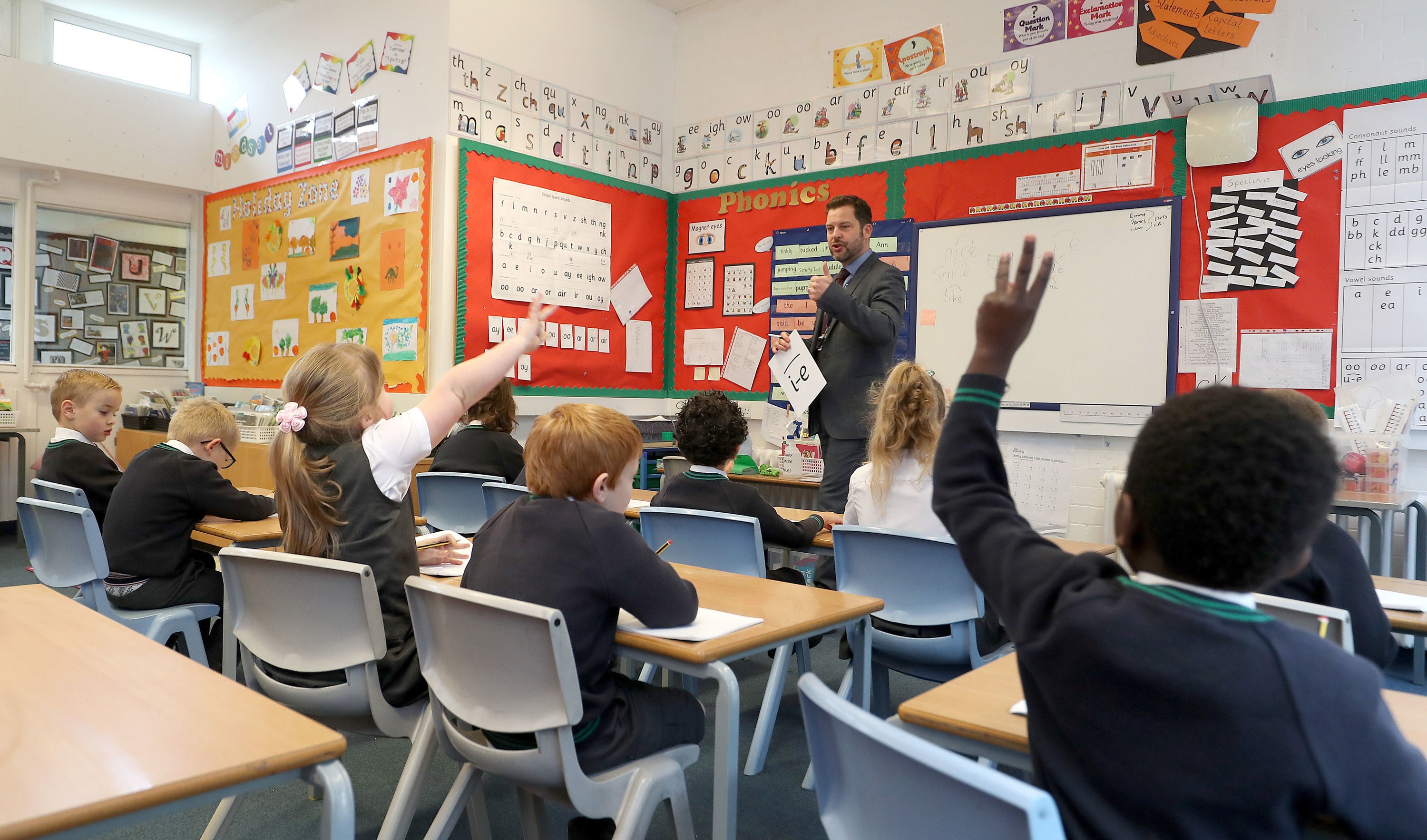School funding formula has moved cash from deprived to wealthier areas, National Audit Office finds
Average per pupil funding fell by 1.2% in the most deprived fifth of schools

Your support helps us to tell the story
From reproductive rights to climate change to Big Tech, The Independent is on the ground when the story is developing. Whether it's investigating the financials of Elon Musk's pro-Trump PAC or producing our latest documentary, 'The A Word', which shines a light on the American women fighting for reproductive rights, we know how important it is to parse out the facts from the messaging.
At such a critical moment in US history, we need reporters on the ground. Your donation allows us to keep sending journalists to speak to both sides of the story.
The Independent is trusted by Americans across the entire political spectrum. And unlike many other quality news outlets, we choose not to lock Americans out of our reporting and analysis with paywalls. We believe quality journalism should be available to everyone, paid for by those who can afford it.
Your support makes all the difference.Despite the government’s pledge to level up education, its funding formula has led to the balance of cash moving away from more deprived schools, the parliamentary spending watchdog has found.
A report by the National Audit Office (NAO) found although overall funding for schools in England has risen from £36.2 billion in 2014-15 to £43.4 billion in 2020-21, the rising number of pupils means real-terms funding per pupil increased by only 0.4 per cent.
The funding formula, implemented in 2018-19, has led to the average amount spent on each pupil in the most deprived fifth of schools fall in real terms by 1.2 per cent, while it has risen by 2.9 per cent in the least deprived fifth. In total, 58.3 per cent of the most deprived fifth of schools saw their per pupil funding fall in real-terms.
The formula introduced a minimum level of per pupil funding across England – £3,750 per primary pupil and £5,000 per secondary pupil. This led to payments rising for schools in wealthier areas of the country, which previously received lower levels of funding, with 37 per cent of the least deprived fifth of schools being allocated more funding in 2020-21.
None of the most deprived fifth of schools were allocated increased funding as a result of the formula, as they were already receiving more than the minimum level, according to the NAO.
The report follows criticism of the government’s plan to help pupils’ learning recover from the impact of the pandemic. After it announced that an additional £1.4bn would go towards the catch-up scheme last month, the Education Policy Institute (EPI) think-tank estimated that this works out to just £50 more per pupil each year. The EPI calculated that the level of funding needed to reverse learning losses due to the Covid-19 pandemic is £500 per student a year.
The education recovery tsar, Sir Kevan Collins, resigned in the wake of the announcement, saying the support “falls far short of what is needed”.
Gareth Davies, the head of the NAO, questioned whether the Department for Education has “met its objective of allocating funding fairly”. He added: “There has been a shift in the balance of funding from more deprived to less deprived local areas. Although more deprived areas and schools continue to receive more per-pupil funding than those that are less deprived, the difference in funding has narrowed.”
A spokesperson for the Department for Education said: “The National Funding Formula (NFF) is levelling up school funding and delivering resources where they are needed most. It ensures that the areas with high proportions of students from disadvantaged backgrounds are receiving the highest levels of funding, providing £6.4bn in funding for pupils with additional needs in 2021-22.
“We are providing the biggest uplift to school funding in a decade – £14 billion in total over the three years to 2022-23 – investing in early years education and targeting our ambitious recovery funding, worth £3 billion to date, to support disadvantaged pupils aged two to 19 with their attainment.”
Join our commenting forum
Join thought-provoking conversations, follow other Independent readers and see their replies
Comments